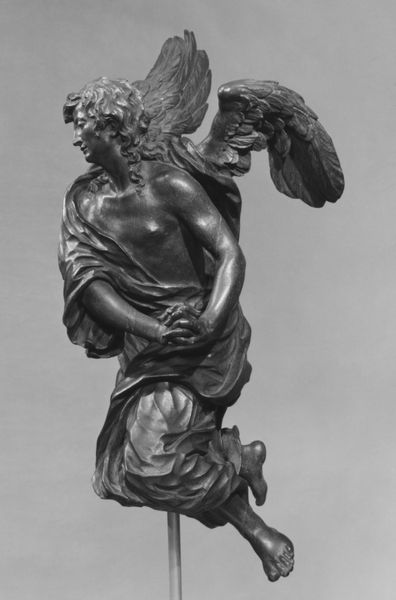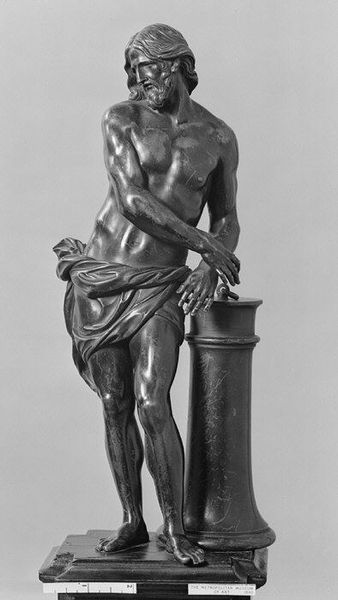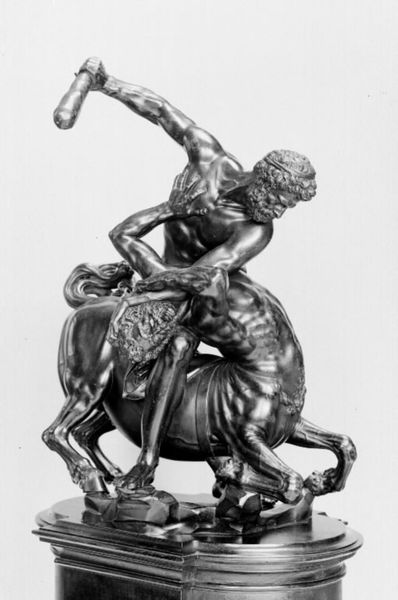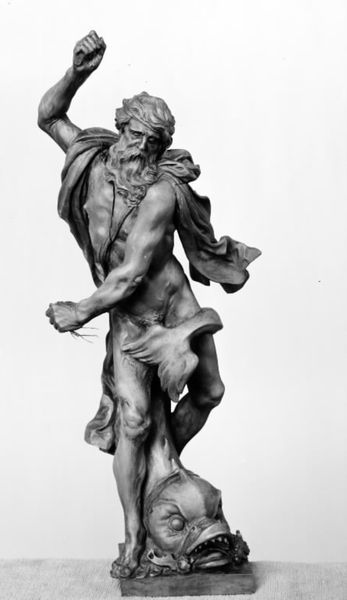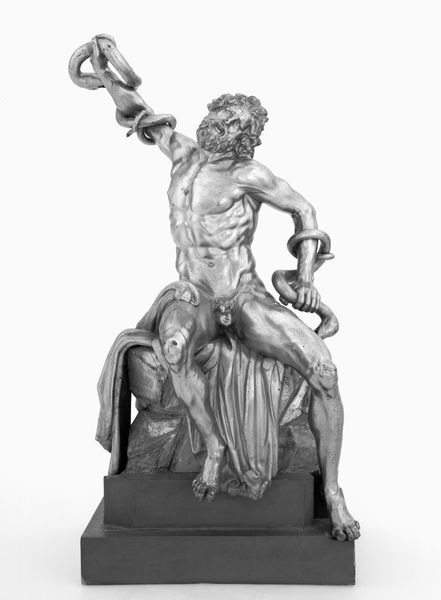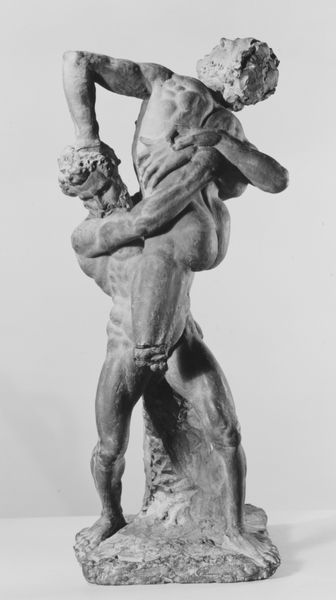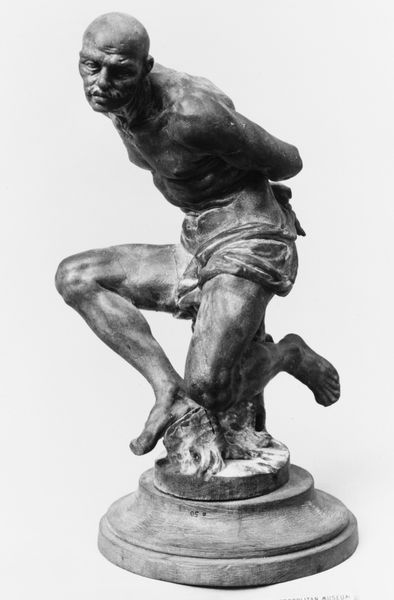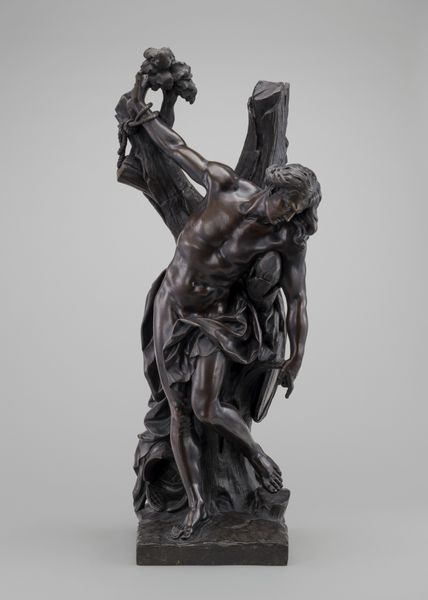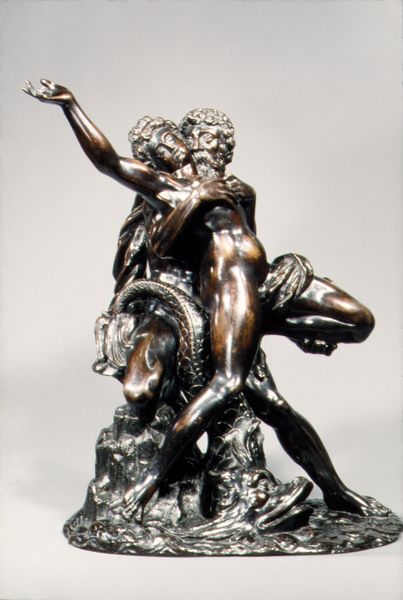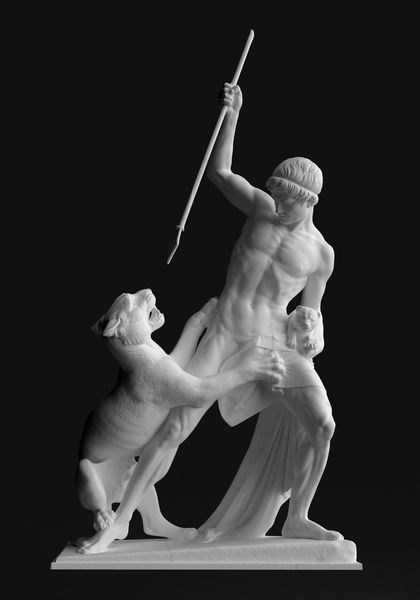
bronze, sculpture
#
neoclassicism
#
sculpture
#
bronze
#
figuration
#
sculpture
#
academic-art
#
monochrome
#
decorative-art
#
nude
Dimensions: Height (with base): 29 1/2 in. (74.9 cm); Height (to tip of spear): 21 3/4 in. (55.2 cm); Height (to top of head): 21 1/8 in. (53.7 cm); Overall (base): 7 7/8 × 6 in. (20 × 15.2 cm); Weight: 40 lb. (18.1 kg)
Copyright: Public Domain
Michel Anguier sculpted this bronze Neptune, the Roman god of the sea, without a specified date, and it now resides at the Metropolitan Museum of Art. Anguier, working in 17th century France, was part of a generation of sculptors who helped to establish a distinctly French Baroque style, influenced by classical antiquity and Italian Renaissance ideals. But this wasn’t just about aesthetics; it was deeply intertwined with the politics of the era. The French monarchy, under Louis XIV, used art as propaganda, with allegories of power and control. Neptune, with his muscular physique and commanding presence, embodies this assertion of dominance. Standing over a subdued sea creature, he holds his trident as a symbol of his rule over the waters. But who gets to be Neptune? What does it mean to embody power and authority in a world where those attributes have historically been reserved for a select few? Consider how classical myths have been reinterpreted throughout history, often to reinforce existing social hierarchies, or to challenge them. What does it mean to reconsider the way power is represented, and who gets to wield it?
Comments
No comments
Be the first to comment and join the conversation on the ultimate creative platform.
